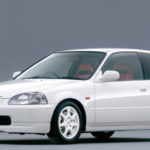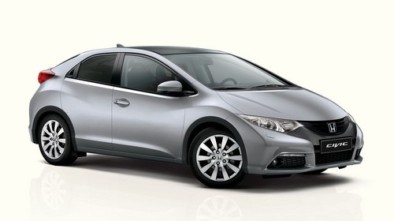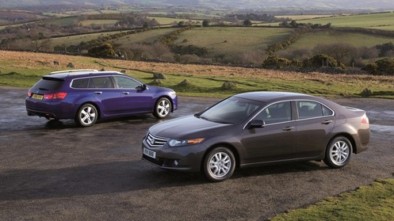Honda Civic 7 2000 - 2005 - used, experience, problems
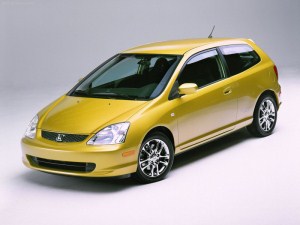
Honda Civic 7
The Honda Civic is the best-selling Honda of all time. It is one of the top ten best-selling models in the world, considering that the 9th generation has been built so far, ending with the 2012th, which started in May 2001. The seventh-generation Honda Civic, which was assembled from 2006-XNUMX. It is distinguished by its "van" appearance, as well as the characteristic gear lever located on the instrument panel near the steering wheel.
In Europe there is, first and foremost, a hatchback version of the Honda Civic with three and five doors, made in England. The chassis for these models is EU for five doors and EP for three doors. In addition to these common models, ES models (a four-door sedan assembled in Japan and Turkey) as well as an EM model, a coupe version assembled in the USA, were present.
The Honda Civic, which used to be a small, small-looking car with comfort, certainly not a priority, but still fun and engaging to drive. With the launch of this generation, Honda wanted to completely change its song.
It's been a long time since the Honda Civic was launched. Since the advent of the Honda Civic, it has found its way to many owners by selling very well. The Honda Civic looks much nicer than its predecessor, offering a great interior. It's fun to drive thanks to VTEC engines that deliver great performance.
In early 2004, a Honda Civic was restyled. According to factory data, there were changes to this over 5000 parts.
ENGINE - Honda Civic 7
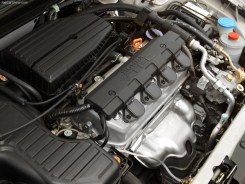
Honda Civic 7
The engines used to fit the Honda Civic belonged to the D Series. Gasoline 1.4, 1.6 and 1.7 liters. Then, the K series 2.0-liter engines and 160-hp and Type-R models of 200-hp same-liter, and 4EE2 (the only diesel on offer), 1.7 liters of volume, originally from Isuzu. We can mostly find gasoline with 1.4 and 1.6 engines, as well as 1.7 CTDi diesel engine. The 2.0 Sport model is extremely rare, it's essentially an Accord engine, adapted for use in the Civic. It mostly went in the five-door versions, and is always richly fitted. It was more popular in overseas countries. The Type R has a K20A2 engine, 200hp from 2000 cc displacement and is also the first Type R Honda Civic model available to ordinary mortals on the left side of the road (angry Hondaers know what the EK9 stands for).
1400 and 1600 cc petrol engines (1.7 is a slightly agitated 1.6, so all that said for 1.6 applies to it). They belong to the latest generation of Honda's legendary D Series, which has been built since 1986 and ZC engines in the first-generation CRX. Engine setting is SOHC 16v, with VTEC head.
The 1400cc engine bears the 14hp D6Z90 engine, while the 1600cc engine is the 16hp D1V110 engine. These two engines have identical essential parts, and can be viewed technically as the same engine (from a maintenance point of view). The distribution system consists of a toothed belt and hydrospanner (a novelty over earlier D Series models). Also, this engine does not have an ignition distributor, rather it is solved over 4 bobbins, which can be changed separately. Unlike earlier versions, only one PK belt drives all the aggregates here. The engine is very reliable, there are parts for regular maintenance. In case engine refresh is required, this can be done (although the links for the D16V1 are expensive in the original). We know the system of how to end it, too, with a bit of playing with Honda's parts. These engines are the core of Honda, starting, efficient and reliable. They also tolerate a gas installation without problems (although it is advisable to install only sequential gas).
1.7 The CTDi engine is interesting, because before you can say anything about it, you need to know the history of Honda's diesel engine. Honda is a motor company, making every kind of engine you can think of. Synonymous with Honda are gasoline engines. However, with the advancement of diesel technology, it had to give up and the first engine to adorn the Honda diesel was an unfortunate 2000cc from the Rover, literally "transplanted" (at the time Honda had a stake in the Rover itself). It is recommended that you avoid this engine.
1.7 CTDi, a product of the Isuzu Group, was next listed. For the uninitiated, Isuzu is the largest diesel engine manufacturer in the world, so logically it was the first station Honda turned to for the engine. It is the engine that powers many Opel. What is specific about the driving "heart" we are talking about is that the engine assembly is Isuzu's only, while the clutch and all external units are made by Honda, so until recently the biggest drawback of this engine was the expensive clutch). The block itself and the cylinder head are the same, but the alternator, anlaser, engine mounts are all unique to the Honda Civic diesel, so keep that in mind as a bigger investment if it happens to be canceled, since everything is mostly made only in the original.
There are aftermarket parts for this engine and even for refreshments (dithung heads and girlfriend for example), and for regular maintenance this is already implied. The 4EE2 engine carries a toothed belt and two spanners, with service running at 60 km. The engine is reliable and durable, and with its 000bhp is the right measure for the Civic's weight, with a slightly pronounced turbo hole.
The best part is the EP3 (K20A2), more precisely the Type R is in many ways a better model than its next-generation FN2 Type R Civic. It owes better traction and stability to the rear independent suspension, unlike the successors. Up to 5000 rpm you have a normal car for every day, and then you get a sports car to the red field at the rev, with not too expensive maintenance.
Most Honda Civic models are gasoline-powered, but Isuzu's common-rail 1.7 hp 100hp is not bad either. It is made in Japan and is better than engines from the same series, which are made in Poland and are built in Opel. It is advisable to have a thorough inspection by a diesel engineer before purchasing. For all Honda engines, it is extremely important that they be maintained with genuine parts, and sporty refinements should be avoided.
Transmission
The transmission is rarely the pain of these Honda Civic. Sometimes it may be necessary to replace the transmission bearing. In this case it is inevitable to remove the transmission and look for a broken bearing. In addition, there are high quality replacement (EXEDY) clutch kits for the 1400 cc and 1600 cc engines, although they do not carry the same clutch (the difference is in diameter, the 1400 cc carries a smaller clutch). Transmission oil can be used with Honda MTF, or semi-synthetic 10w40 grade (Honda specialty).
The gearbox is excellent, but many unfortunately criticize it for the "a 'la Renault 4" position, but only one who has not driven this model can say it, the position is perfect and lies perfectly in the hand. Similar to race cars, it is close to the steering wheel, making it easier to jog and increase speed when performing this "act".
Trap
This Honda Civic has a trap that is identical to all body versions, so there is no need for one to separate. What definitely hurts them are the front shock absorbers (Japanese Kayabu tip). All other manufacturers had complaints, judging by my experience in sales. Also, the good thing about Honda is that the entire trap is in separate parts, everything can be replaced separately, with the front silen blocks, tkz. pates are already damaged at 100 km. All other parts of the ladder and steering wheel are interchangeable and affordable. Characteristic of this car is that it has a steering wheel bar set high enough, higher than any Honda Civic, so that there may be a luft in the bar beforehand, which has no salvage. No repair kit can solve this problem. The only cure is a new batten (this is rarely done because of the high cost), you just get used to the sound it creates.
Brakes
Another segment that is consumables. There are replacement parts for everything. Attention should be paid to the range of wheel holes as the Honda Civic Type R and the redesign (2003-2005) carry five and the other four holes. The pros will handle this by chassis number without a problem. Disks and tiles are not expensive, there are many types of quality and price.
Electronics
Honda Civic electronics are reliable, it is Denso, although it is made in England. Admittedly, Siemens, as well as Bosch, got involved in the game, but they mostly work without problems. Camshaft sensors, crankshafts, and all others are mostly Japanese-made and do not cause problems. The EGR valve can give a problem to the diesel version; the solution is to clean or replace it.
Honda Civic - Model History:
2000: The seventh generation Honda Civic is introduced. Two starter engines 1.4 with 89 hp, and 1.6 with 108 hp with five-speed manual or four-speed automatic transmission. It is offered with 4 equipment packages. S package contains air conditioning, el. lift, heated seats and 4 airbags. SE package adds a transparent roof, el. rear windows and alarm. SE Sport contains a sports suspension and a CD charger. The Executive has leather seats and digital air conditioning. At the beginning, they were only with five doors, while later at the end of the year, a model with three doors appeared.
2001: Introduced a 2.0-hp Honda Civic Type R 197 with a VTEC engine.
2002: Introduced Honda Civic diesel with 1.7 com om rail engine
2004: restailing (redesigned headlights, radiator grille, front bumper);
2005: Autumn premiere of the eighth generation Honda Civic.
FAULTS - Honda Civic 7
After purchasing a used Honda Civic, it is recommended to replace the timing belt immediately, together with the spanners, because it is a sensitive part of the engine (especially with older models). There can also be problems with the thermostat and the permeability of the cooling system. The exhaust is also sensitive, and it can be judged by how the car was driven. The bodywork is mediocre, but if the car did not have a collision, then as a rule there should be no problem. So, it is important that the car has the original color and that there is no damage. The trap is also solid and resilient, even on our roads. But it is not good if the car is lowered. This significantly increases the mechanical load of vital parts of the trap (especially ball joints, rubber supports). Improperly worn tires is a bad sign, but equally new tires can camouflage the actual condition.
In 1,4 and 1,6 gasoline engines, check the timing belt from time to time and, if necessary, replace it before the prescribed deadline to avoid tearing the timing belt as well as the complete cost of causing serious damage to the engine.
1.6 gasoline engine. On a Honda Civic manufactured until June 2001, the problem of air intake from the beginning. Caused by poor closing of the valves, which are installed too tightly in the factory. Most of the cars affected by this problem were discovered shortly after their sale.
1.6 gasoline engine. On a Honda Civic manufactured until December 2001, low-speed twitching and hiccups at acceleration. Caused by poor calibration of the engine control unit. If the problem is not resolved by reprogramming with the new software. Remedy for models affected by this problem: change the engine unit.
Diesel engine. On the Honda Civic manufactured until May 2002, the possibility of malfunctioning and power down, with a warning light on the instrument panel. A problem with the valve regulating the variable geometry of the turbine.
Diesel engine. On the Honda Civic manufactured until March 2004, a gradual loss of power, especially on cars that have traveled much of their mileage in the city or at low speeds. Caused by clogging of the variable geometry of the turbocharger. The first change was made at the factory in June 2003, software changes to the engine management electronics, and if you are unable to cure the models affected by this problem: change the engine electronic unit. Then a change in turbine in March 2004 increased control of variable geometry to prevent the buildup of deposits on the turbines.
In the version with the Tipe R2.0, the diesel engine produces occasional uneven engine running and knocking, which is eliminated by reprogramming the computer engine.
With Honda Civic manufactured until 2004, frequent gas leaks into the air conditioning system condenser.
The brakes did not get the best marks, this is definitely one of the weaker points of the car. There can also be problems with the hand brake, which sometimes only works on one of the wheels. This is worth checking if the parking brake is holding.
Fast wear on the brake system parts, as well as extremely fast wear on the front brake pads for diesel vehicles.
All vehicles are faced with the appearance of metallic sound coming from the wheels while driving on uneven surfaces. The problem of the real rubber housing of the spring springs and shock absorbers.
In older Honda Civic, water leaks into the cab around the roof antenna, around the gasket.
The plastic inside is very sensitive to scratches.
A common occurrence of sizzling under the dashboard, problems are less after the redesign of the model.
There is a creaking sound when the clutch pedal is depressed.
Often poor reception of original radio units.
Conclusion
If you decide on a Honda Civic you will not go wrong. The Honda Civic is a car with tradition, and the basic models are well equipped.
All generations of the Honda Civic have superior mechanics and can only be shortened by aggressive, maintenance-poor driving (irregular or unoriginal parts).
Honda holds and builds its reputation not only on cars, but also on sports engines and Formula One.
Honda Civic price - used preview
Recommendation of similar texts:

Hi there, I am Mladen and I am an auto enthusiast. I started this blog years ago to help like minded people share information about latest cars, car servicing ideas, used car info, exotic cars, and auto technology. You will find helpful articles and videos on a wide variety of cars - Audi, Mercedes, Toyota, Porsche, Volvo, BMW and much more. Ping us if you have anything cool to share on latest cars or on how to make older cars more efficient, or just want to say hi!

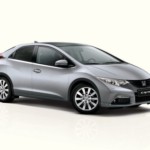
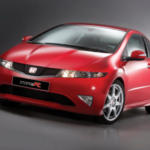
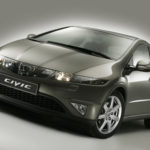
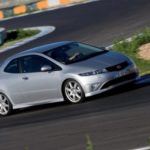
![Type R - Time Symbol [Part 3 - Civic]](https://mlfree.com/wp-content/uploads/2018/02/pmlautomobili_civic_TypeR_01-Custom-150x150.jpg)
